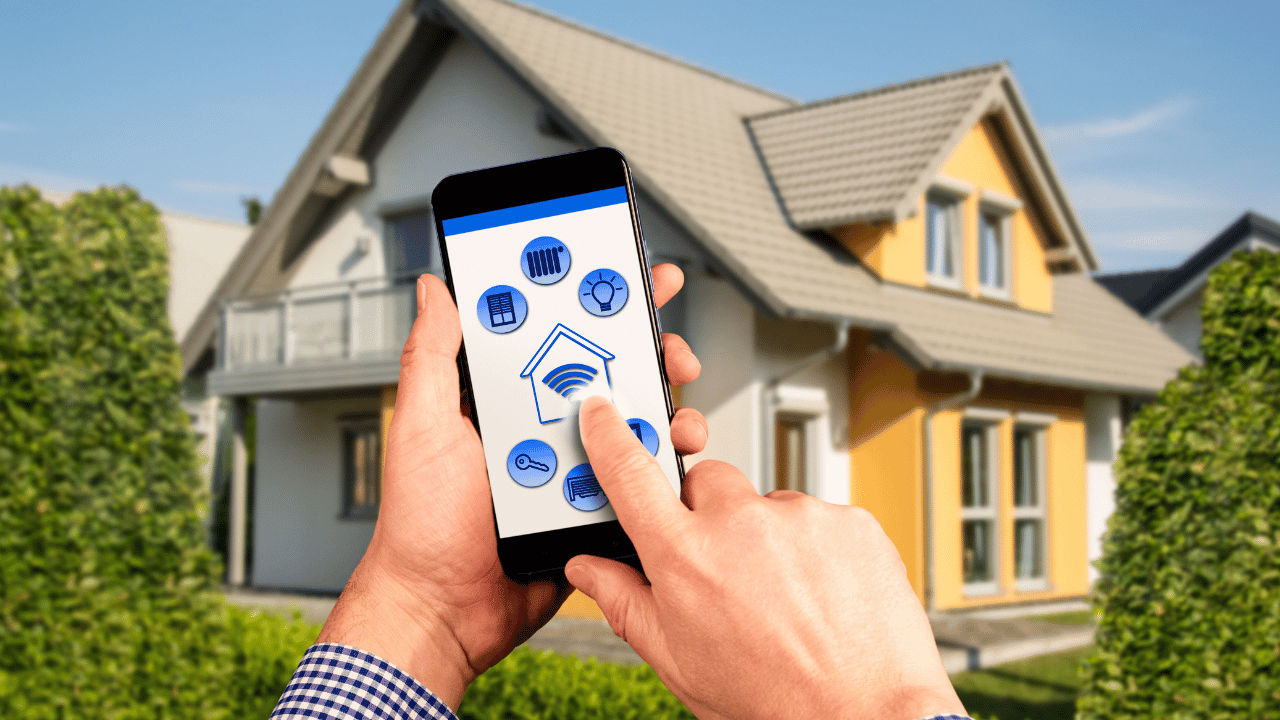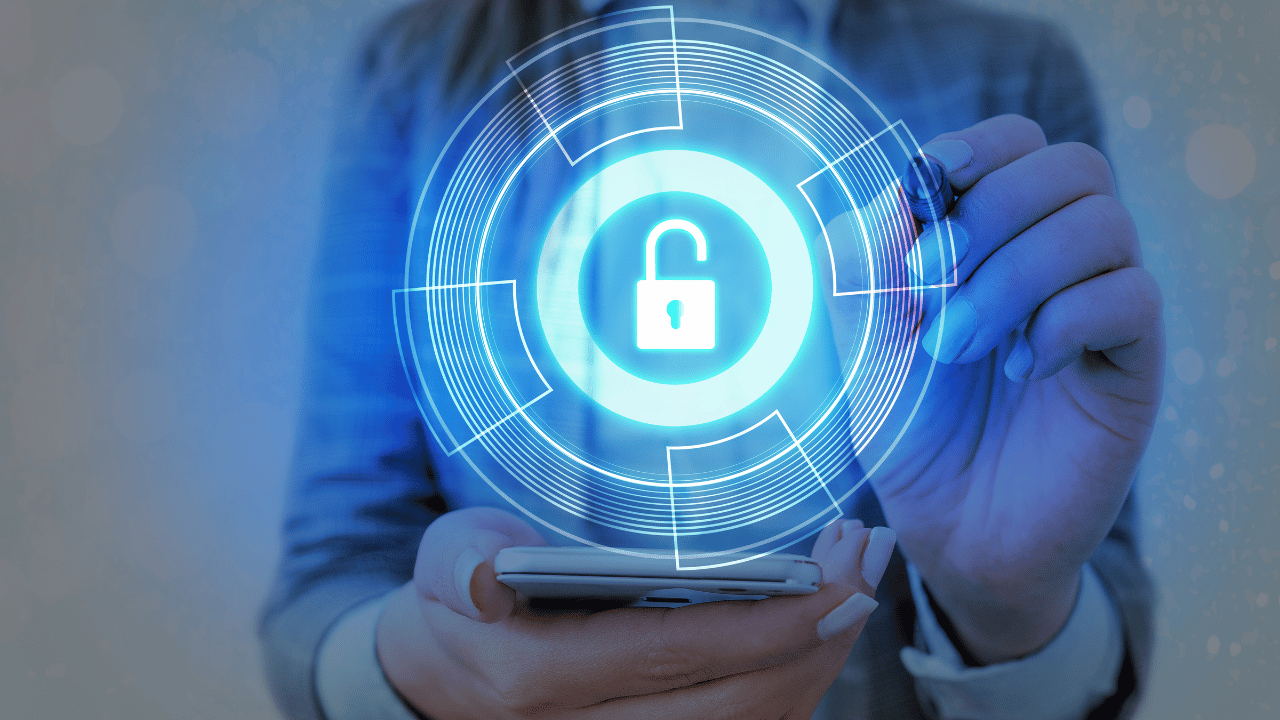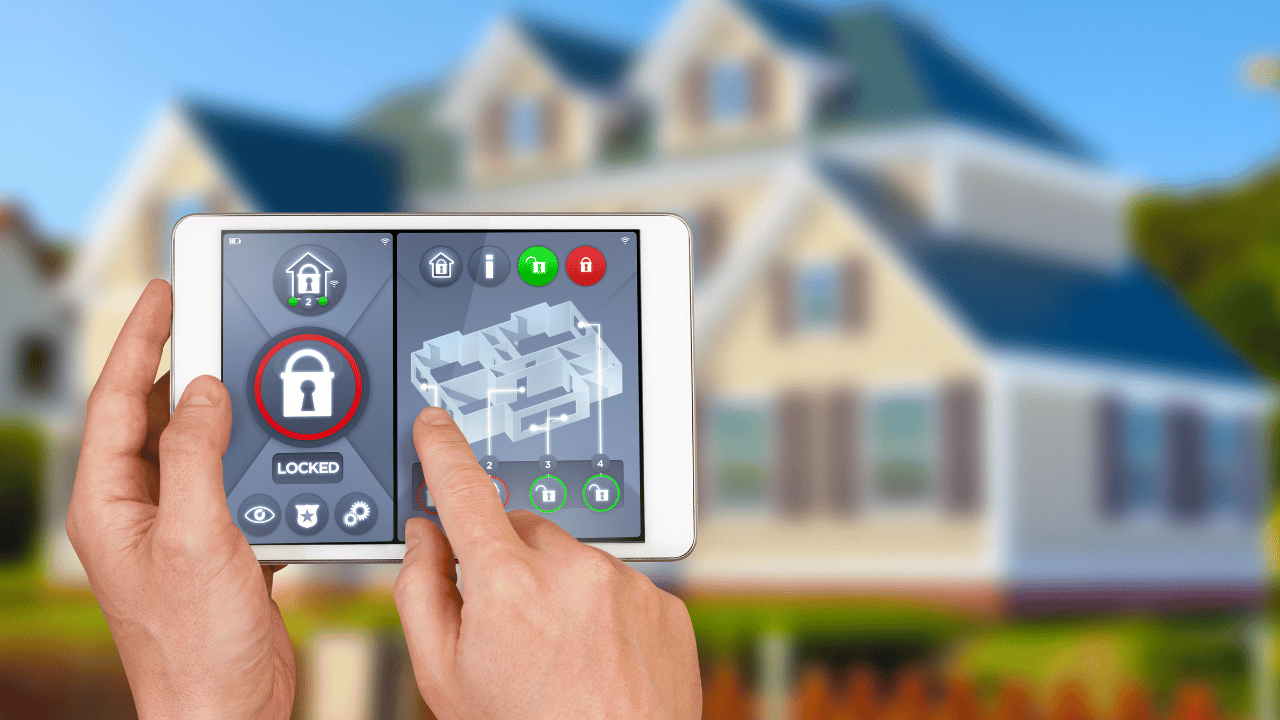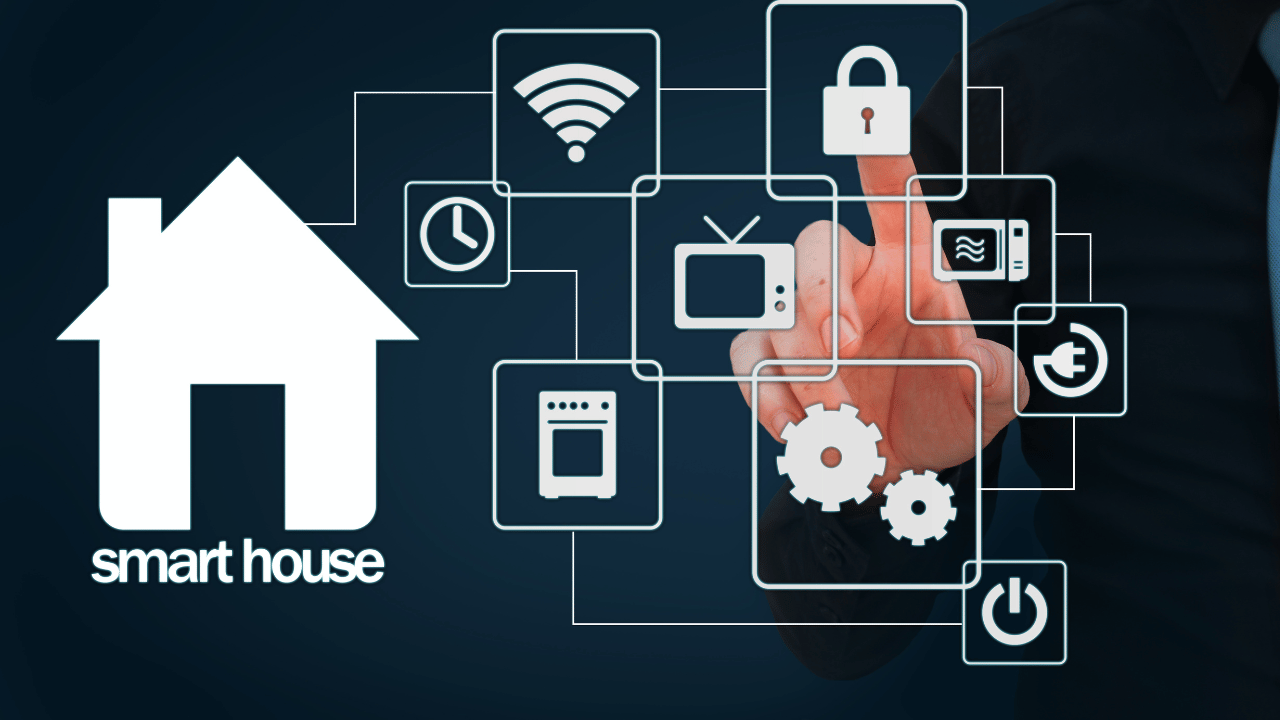Last Updated on September 11, 2023 by Pro Handyman Australia – Editorial Team
The increasing prevalence of smart devices, such as speakers, security cameras, video doorbells, and even remotely-controlled washing machines, has revolutionized the way we experience daily life, bringing unparalleled convenience to our doorsteps. However, as we continue to integrate these devices into our homes, it becomes paramount to prioritize the safety and privacy of the data they harness.
Understanding Privacy Concerns with Smart Devices
It’s essential to acknowledge that while smart devices undoubtedly enhance our living standards, they also pose potential privacy risks. As our homes become smarter, they also become more vulnerable to external threats and data breaches. Therefore, staying informed about these concerns is the first step to ensuring the sanctity of our personal information.
Strategies to Fortify Your Smart Home
To protect yourself and maintain the integrity of your smart home setup, it’s essential to adopt certain best practices. These can range from regularly updating device software, setting up strong and unique passwords, to being cautious about granting third-party applications access to your devices. By being proactive, you can enjoy the benefits of smart home devices without compromising your data’s security.
Understanding Smart Homes

Smart homes represent modern residences equipped with internet-connected devices, allowing homeowners to remotely control, monitor, and manage various aspects of their household. These devices encompass a broad range of systems and appliances that elevate our living experience. From managing heating, lighting, and security to controlling kitchen gadgets and entertainment setups, smart homes offer users the flexibility to tailor their living environment, conserve energy, and bolster security.
Evaluating the Security of Smart Homes
The security of smart homes isn’t black and white. Whether they are deemed safe largely hinges on the specific devices chosen, their configuration, and the overall network security. By laying a strong foundation for your smart home, you can bask in its conveniences without jeopardizing your privacy.
While the allure of operating a light bulb from the comfort of your bed or deploying voice commands for music is undeniable, it’s imperative to remember that such devices can also introduce security vulnerabilities. Before making a purchase, research thoroughly and lean towards devices recognized for their stringent security features. This helps mitigate potential threats, including unauthorized access, phlashing, and data breaches.
Potential Security Risks in Smart Homes

Embracing a host of unprotected smart devices in your residence can inadvertently expose your personal life. Intruders could potentially eavesdrop via voice assistants, observe through security cameras, determine your whereabouts, or even unlawfully gain entry via smart door locks. Here’s a closer look at the inherent security challenges linked to unprotected smart home gear:
- Data and Identity Compromise: Many smart home devices hold a reservoir of sensitive information, spanning personal details, passwords, and financial credentials. Breaches can offer hackers a golden opportunity to exploit such data for deceitful activities or identity theft.
- Device Takeover: Device hijacking involves an external entity gaining dominance over a smart gadget. Successful intrusions can lead to manipulations ranging from tampering with security cameras to overriding smart speakers. Such unauthorized access not only breaches privacy but might endanger the residents.
- Man-in-the-middle (MITM) Attacks: In such incursions, perpetrators intercept and potentially alter the communication between two devices within a smart home network. A hacker might intercede in the interaction between a smartphone and a smart thermostat, thereby assuming control and potentially infusing malware.
- Distributed Denial-of-Service (DDoS) Attacks: DDoS attacks inundate a device or service with a deluge of spurious requests, debilitating its responsiveness. Launching a DDoS assault on a smart home might cripple vital household gadgets, leading to disruptions and security lapses.
- Permanent Denial-of-Service (PDoS) Attacks: More severe than DDoS, PDoS attacks can inflict irreversible damage on a device, rendering it inoperative. Given its direct impact on service continuity, victims might face monetary setbacks due to replacement costs.
The proliferation of smart home innovations undeniably uplifts our quality of life. However, it’s essential to stay informed and vigilant about the corresponding security implications. Adopting preventive measures can be instrumental in warding off cyber threats.
Strengthening Cyber Safety in Your Smart Home

As we increasingly integrate connected devices into our homes, it’s crucial to be aware of the potential vulnerabilities they may introduce. Let’s delve into vital strategies to fortify the cyber safety of your smart home ecosystem:
Fortify Your Wi-Fi Connection
Start with encrypting your Wi-Fi network. By concealing your network name, you can effectively shield it from potential invaders. Such protective measures can deter hackers from tampering with your smart home devices and accessing confidential information.
Craft Robust Passwords
Steer clear of simplistic and predictable passwords for your devices and online accounts. Opt for a mix of uppercase, lowercase letters, numerals, and unique symbols to enhance password strength. Such intricacies can make it a daunting task for cybercriminals to infiltrate your accounts. Also, avoid the temptation of recycling the same password across multiple platforms.
Embrace Two-Factor Authentication
Incorporate two-factor authentication (2FA) for an added security blanket. 2FA introduces an auxiliary verification step during the login process, which can be a text alert or an authentication application, further complicating unauthorized access attempts.

Investigate Before Purchasing
Before making any smart device acquisitions, take a moment to assess the manufacturer’s security protocols and peruse customer feedback. Such due diligence offers insights into the device’s security robustness and its track record, helping you make an informed decision.
Implement VPN on Your Router
Enhance network security by deploying a virtual private network (VPN) on your router. A VPN not only encrypts outbound data but also obfuscates your IP address, impeding hackers’ attempts to compromise your network.
Stay Updated
Regularly refreshing the software and firmware of your devices is paramount. Such updates typically embed the newest security rectifications, diminishing the chances of unsanctioned access to your devices and valuable information.
Opt for Credible Security Software
Equip your smart home gadgets with esteemed security software. This can be instrumental in shielding your devices from malicious entities and viruses and can also spot potential contaminations.
Leverage Firewall and Intrusion Detection Systems
A firewall diligently scrutinizes inbound and outbound network communications, while an intrusion detection system remains vigilant against any nefarious activities within your home network.
Clear Out Devices Before Parting Ways
If you decide to dispose of or sell a gadget, always initiate a factory reset. By doing so, you’ll erase all personal configurations and data, preserving the sanctity of your smart home’s security and ensuring your private information remains confidential.
The Advantages of Practicing Best Practices to Protect Your Privacy
In today’s interconnected world, our digital footprint grows with every click, like, share, and transaction we make online. While the conveniences of modern technology are undeniable, they come with a host of privacy concerns. Now, more than ever, it’s imperative to practice best practices in privacy protection. This blog aims to shed light on the myriad advantages of adopting these practices and the security they bring.

1. Safeguarding Personal Information
The crux of practicing privacy best practices revolves around keeping personal information safe. Such practices include using strong, unique passwords, enabling two-factor authentication, and being wary of sharing sensitive information.
- Identity Protection: Shielding your personal data drastically reduces the risk of identity theft. When you control the information you share and with whom, you close the door on potential breaches.
2. Financial Security
A significant portion of our financial transactions now occurs online, from shopping to banking.
- Reduced Fraud Risk: By adopting secure online habits, like checking for SSL certificates on websites and avoiding the sharing of PINs or passwords, you minimize the risk of financial fraud.
3. Enhancing Digital Reputation
Your online reputation can greatly influence personal and professional opportunities. By being mindful of the information you share and the platforms you share it on, you can maintain a positive digital reputation.
- Controlling Your Narrative: Employers, colleges, and other institutions often vet individuals online. Guarding your privacy ensures that your digital persona mirrors your real-world values and accomplishments.
4. Reducing Targeted Advertisements
Ever searched for a product, only to find ads for it everywhere later? This is due to companies tracking your online activities.
- Limiting Exposure: Using tools like ad-blockers, VPNs, or incognito browsing can reduce your exposure to invasive targeted advertisements.
5. Preventing Unwanted Social Engineering and Phishing Attacks
Knowledge is power. The less malicious actors know about you, the less likely they can manipulate or deceive you into compromising situations.
- Guarding Against Manipulation: By restricting the flow of personal information online, you limit the ability of cybercriminals to craft targeted scams based on your life details.
6. Enhancing Mental Well-being
Knowing that you have taken steps to protect your online privacy can offer peace of mind.
- Stress Reduction: Anxiety about potential data breaches or identity theft can be significantly reduced when you are proactive about your online privacy.
7. Encouraging Ethical Business Practices
When consumers champion privacy and support businesses that do the same, it sets a standard in the marketplace.
- Promoting Ethical Norms: By supporting businesses that prioritize customer privacy, and avoiding those that don’t, you encourage a broader shift toward ethical data handling practices.
8. Maintaining Autonomy in the Digital World
Your data belongs to you. By actively protecting your online privacy, you retain control over your personal narratives, relationships, and data.
- Controlling Data Flow: Using tools that inform you about data breaches or unauthorized access attempts ensures that you always have a say in where and how your data is used.
9. Fostering Trust in Digital Relationships
Whether it’s a business relationship or a personal one, trust is crucial. When you adopt and advocate for privacy best practices, it sets a precedent for others to do the same.
- Building Digital Integrity: Just as you protect your privacy, respecting the privacy of others fosters mutual trust in online interactions, be it in business or personal spheres.
10. Preparing for the Future
The digital landscape is ever-evolving. What’s acceptable today might be deemed invasive tomorrow. By consistently adopting the best practices in privacy protection, you prepare yourself for future changes in the digital realm.
- Staying Ahead: Regularly updating your knowledge about privacy concerns and the tools available to tackle them ensures that you’re always prepared for what the digital future holds.
The digital realm offers unparalleled conveniences and opportunities, but it also comes riddled with potential pitfalls. Protecting your privacy isn’t just a reactionary measure against these pitfalls; it’s a proactive approach to ensuring that as we stride further into the digital age, we do so with our integrity, autonomy, and security intact. Embracing best practices to protect your privacy isn’t just about guarding data; it’s about safeguarding the very essence of who we are in an interconnected world.
Conclusion
As the allure of smart homes continues to grow, bridging the gap between convenience and security becomes paramount. The evolution of our living spaces into interconnected hubs offers unparalleled ease and efficiency, but it also ushers in new challenges around privacy and safety. While the integration of smart devices promises a future of intelligent living, it’s imperative that homeowners move forward with a discerning eye. Prioritizing cyber safety and being informed about potential vulnerabilities can ensure that the smart home experience remains both innovative and secure. By adopting the best practices outlined in this blog, individuals can enjoy the benefits of a connected home while safeguarding their personal data and peace of mind. As technology advances, let’s commit to being proactive protectors of our own digital domains.
